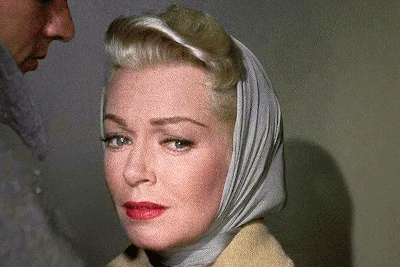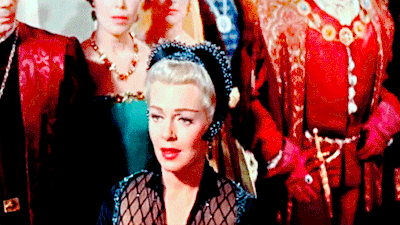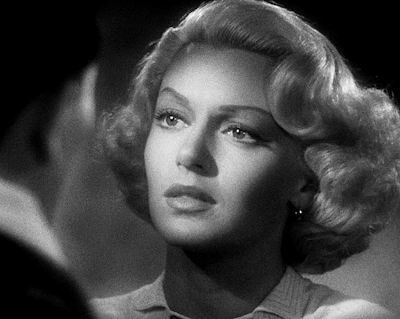The Return of Lana Turner
“What becomes of a woman who lives through such terror? How does she pick up the threads of her life again? Where does she go to live, who gives her help, who does she see? What is it like to learn to live alone, what changes does it make? Is she moody now, is she sad, has the tragedy left its mark on her face as well as in her heart? And where does she go from here? They listened carefully, the people in charge of protecting Lana from the morbid, the unfriendly, the too-curious.”
So began the first interview Lana Turner gave in the aftermath of the Johnny Stompanato affair, in February 1959. She only agreed after Modern Screen assured her that writer Linda Matthews didn’t want to talk about him and Cheryl, they just wanted to know how Lana was doing.
That sold the star. “And they said: in that case, Lana feels she has something to say…”
Before we dive in, a quick recap for the unaware: Lana Turner was in an abusive relationship with gangster Johnny Stompanato, and was stuck with him from the spring of 1957 until his death in April 1958. He treated her horribly and she kept trying to get out of his spotlight, but it all came to a sad end when he threatened her on the evening of April 4, 1958, and Cheryl Crane, Lana’s 14-year-old-daughter, overheard and stabbed him in self-defence. A grand jury would find that Cheryl had committed a justifiable homicide and no charges were brought against her, but she was ordered to the custody of her grandmother and moved out of Lana’s home.
In an article entitled ‘The Way I Live Now’, Lana sat down and talked to Linda Matthews about all the minutiae of her day-to-day after “a year and a half of silence,” because “Circumstances have made me more alone that I have ever been in my life. Yes, now I am really alone.”
Matthews wrote about sitting in front of one of Hollywood’s greatest glamour girls, this gorgeous woman in perfectly tailored clothes, a nicely decorated home, and not a blonde hair out of place on the hot day they recorded their interview. But listening to her speak, Matthews wrote, the words were coming “slowly and thoughtfully,” and with care. “From the very first, they were the words of a woman who has known tragedy and found she could meet it with dignity and courage; who has made great changes in her life and learned to live with them.”
Lana revealed to Matthews that she’d been wanting a change of pace for about four years prior to 1958, but “it isn’t possible to change—just like that.” In the aftermath, she said, “you might say being alone is my own choice.”
To learn that her life had gotten quieter in the aftermath of the Stompanato affair isn’t surprising, but it’s kind of heartbreaking to hear just how isolated she’d made herself. At the time of the interview, she was filming Imitation of Life at Universal International Pictures, one of the films she’s most renowned for in modern times.
Lana sold the family home after everything happened and rented a one-bedroom home in Beverly Hills without a pool or air conditioning, a place of simplicity. It also featured a music room, which was apparently a ‘must have’ and was usually the first room Lana would enter, where Flamenco music played in a “cheerful blast” to make her feel good if she was in a bad mood, or to keep the good mood going if she was already happy.
Lana decorated the small home to her tastes, but she told Matthews that the style was called ‘Early Chaos’ because some of the furniture barely fit through the front door, since they’d been scaled for a mansion. What she couldn’t fit in the home, she sent to storage and told her friends to have at it. “One ecstatic friend hired a decorator at twenty-five dollars an hour to go with him and make a selection,” Matthews wrote. It was here that Lana could be left alone her thoughts and her routines.
“I take a long bath and scrape
my face. Takes hours,” she said. “Then I collect something to eat from the
refrigerator—anything—and then I get into bed.” This is where Lana would either
read a book or a script or answer the constantly ringing phone. But those were
weeknights.
Lana admitted in the interview that Saturday was her favourite day of the week because she spent it totally alone. Reading, more often than not, because “I missed so many good books as a girl. I’m going to read them all.” She also wanted to take up painting again, or would go swimming or golfing or for a long drive, but whatever occupied her time, it was a solo activity.
“I live for that day all week. I don’t even think about anything worrisome,” she said. “Good, happy thoughts on Saturday—or no thoughts at all. I couldn’t live any more without that one day when I belong to myself, when I don’t have to watch every move, don’t have to be ‘on’ all the time, the way I used to be.”
Saturdays, according to Lana, represented the new her. “I know it sounds strange, to hide away like that. I know it isn’t what people expect from Lana Turner. But—I think it’s an important way to live.”
Sundays were reserved for visiting with her mother and daughter, going for drives and having picnics, being a family unit again.
Matthews wrote about Lana’s temperament, saying that she expected to find an unhappy person but instead found her “capable of taking her world into her own hands and molding it to suit her—into something fine and rare…” She tried to find what made Lana unhappy, but the star seemed totally content in the interview.
She could be moody, she admitted, but it wasn’t front pages news if that happened; and nor was she angry. Lana said she’d only ever been mad twice in her life but didn’t elaborate, and said that she just grew quiet when she was angry. “I get silent—dead silent—and my eyes disappear into little narrow slits. It must be horrifying. I suppose its useful, though. It lets the person I’m mad at know about it.” Her happiness was best described by Matthews as turning into a clown with raucous laughter.
Of her film future, Lana reminded Matthews that she was a freelancer, having ended her contract with MGM in 1956, and she was reading scripts for her own production company, but not for parts for herself.
“Why is everyone writing movies for men?” she asked, rather presciently, I might add. “Why doesn't someone write one for a woman? Anyway, they're good scripts. And one for me could come up any time.”
She was also planning to build a house in Acapulco, all alone on a hill she owned. “I own the whole hill. I told you,” she said. “I'm not afraid to be alone.”
Matthews ended her article thusly, fully realizing that Lana was fine with herself and her circumstances. “Anything that can be handed out, she can take and survive—and come out on top,” she wrote. “If anyone in the world has proved that, it's Lana Turner. The laughter hasn't turned sour, the beauty hasn't gone pale. She can handle the bad things the world has to offer far better than most.”




Comments
Post a Comment